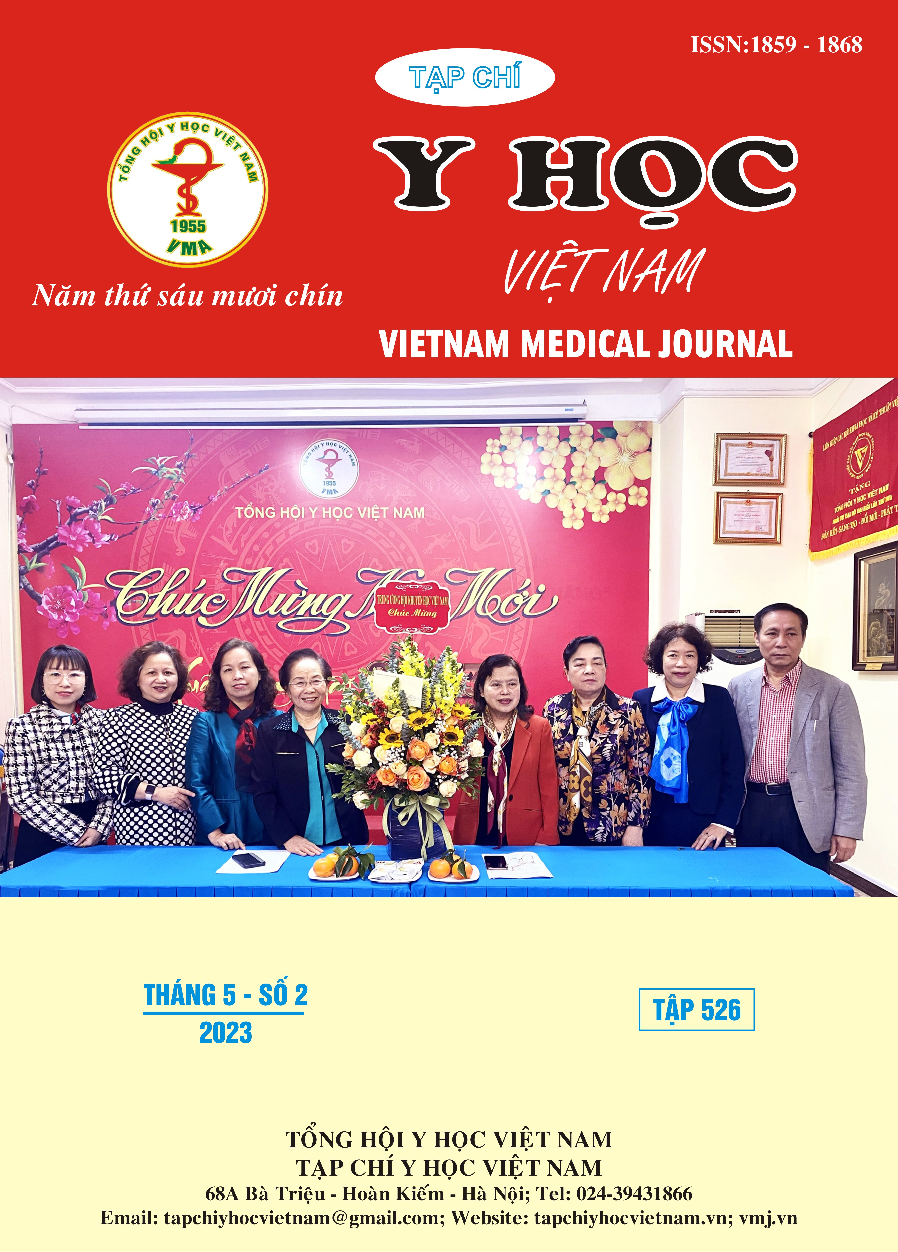COMBINATION OF BACTERIA, VIRUS IN HOSPITALIZED COMMUNITY - ACQUIRED PNEUMONIA PATIENTS
Main Article Content
Abstract
Background: Hospitalized community - acquired pneumonia (CAP) is a common disease that can be caused by one or more bacteria and virus in pathogenic combination. The multiplex real-time PCR is used as an optimal technique with high sensitivity and specificity to detect pathogenic agents, especially agent combination. Objects: To determine the rate of bacterial and viral combination in hospiatalized community - acquired pneumonia patients and the relationship between the combination with patient’s age and gender. Methods: Subjects were 138 samples of the sputum from CAP patients hospitalized at Nguyen Tri Phuong hospital. Before using the multiplex real-time PCR to detect pathogenic agents, these sputums were assessed for the reliability based on Barlett’s scale. Results: There were 136 cases (98.6%) detected bacterial and viral pathogens, in which the single agents were 15 cases (11.0%) with 7 cases of single bacteria (5.1%) and 8 cases of single virus (5.9%), the multiple agents were 121 cases (89.0%). The rate of combination between bacterial agents was 14.7%, between viral agents was 4.4% and between bacterial and viral agents was 69.9%. There was no statistically significant relationship between the ratio of the pathogenic agent combination with the age group and with the gender of patients (p > 0.05). Conclusions: The rate of combination between bacterial agents is 14.7%, between viral agents is 4.4% and between bacterial and viral agent is 69.9%. There is no statistically significant relationship between the ratio of the pathogenic agent combination with the age group and with the gender of patients (p > 0.05).
Article Details
Keywords
Hospitalized community - acquired pneumonia, combination of bacterial and viral agent.
References
2. Bộ Y tế (2018), Niên giám thống kê y tế, Hà Nội.
3. Liu Y., Chen M., et al (2009), “Causative agent distribution and antibiotic therapy assessment among adult patients with community acquired pneumonia in Chinese urban population”, BMC infectious diseases, 9(1), pp.1-9.
4. Phạm Hùng Vân (2018), “Tác nhân vi sinh gây nhiễm trùng hô hấp dưới cộng đồng cấp tính không nhập viện - Kết quả bước đầu từ nghiên cứu EACRI (Việt Nam)”, Tạp chí Hô Hấp, (15), tr. 41-55.
5. Capelastegui A., Espana P.P., et al (2012), “Etiology of community-acquired pneumonia in a population-based study: link between etiology and patients characteristics, process-of-care, clinical evolution and outcomes”, BMC Infectious Diseases, 12(1), pp. 1-9.
6. Fukushima E.A., Bhargava A. (2021), “Unusual case of necrotizing pneumonia caused by Fusobacterium nucleatum complicating influenza a virus infection”, Anaerobe, 69, 102342.
7. Jung H.S., Kang B.J., et al (2017), “Elucidation of bacterial pneumonia-causing pathogens in patients with respiratory viral infection”, Tuberculosis and respiratory diseases, 80(4), pp. 358-367.
8. Mannino D.M., Davis K.J., et al (2009), “Chronic obstructive pulmonary disease and hospitalizations for pneumonia in a US cohort”, Respir Med, 103(2), pp. 224-229.


